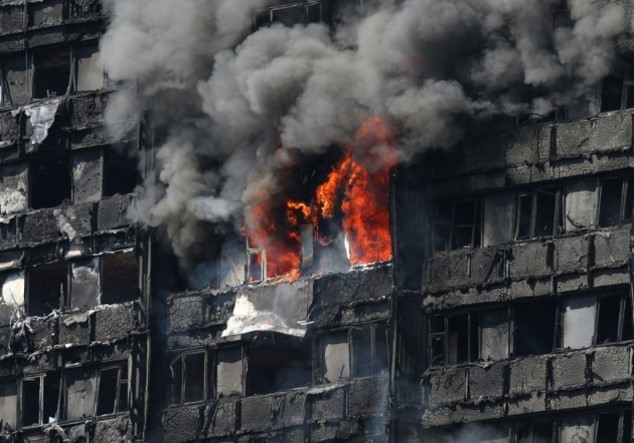What is Cladding and Why Does it Matter?
Cladding is the external layer applied to a building to improve its insulation, aesthetics, and resistance to environmental factors. It’s widely used in both residential and commercial developments. While it can enhance the performance and look of a structure, not all cladding materials are safe. In recent years, certain types of combustible cladding have been found to contribute to the rapid spread of fire, prompting widespread concern and government-led audits.
A cladding risk assessment is now essential in determining whether a building’s external wall system poses a fire risk. It’s not just a regulatory requirement in many jurisdictions—it’s a critical step in ensuring occupant safety.
Why Cladding Has Become a Fire Safety Priority
The increased attention on cladding risk began after several catastrophic fires around the world, including the Grenfell Tower fire in London. Investigations revealed that certain aluminum composite panels (ACPs) and other materials had high combustibility, acting as fuel for fire rather than a barrier.
In Australia, government audits uncovered thousands of buildings with potentially unsafe cladding. These included apartments, offices, hospitals, and schools. As a result, local councils and state governments have introduced strict protocols requiring owners to conduct a cladding risk assessment and implement any necessary rectification measures.
What Does a Cladding Risk Assessment Involve?
A cladding risk assessment is a systematic evaluation of a building’s façade materials and their contribution to fire spread. This process is generally carried out by qualified fire safety engineers or accredited building consultants.
Here are the main components of a typical assessment:
- Identification of the cladding material type (e.g., metal, timber, composite)
- Analysis of the core composition of panels (e.g., polyethylene or fire-resistant core)
- Inspection of installation methods and cavity barriers
- Review of the entire façade system in the context of fire safety
- Risk grading based on material performance, layout, and occupancy
- Recommendations for mitigation, replacement, or ongoing management
The assessment may also include destructive testing, where samples are removed for lab analysis to determine combustibility and performance under fire conditions.
Who Needs a Cladding Risk Assessment?
In 2025, any property built or renovated between the late 1990s and 2018 that features metal or composite cladding may be subject to review. This especially applies to:
- Multi-storey residential buildings
- Commercial office buildings
- Hotels and serviced apartments
- Health and education facilities
- Government-owned or public-access buildings
Even if an assessment is not legally required, insurance companies are increasingly demanding evidence of a recent cladding risk assessment as part of their underwriting process.
The Cost of Doing Nothing
Ignoring the risks associated with cladding can lead to devastating consequences. If a fire occurs and the cladding is found to have contributed to its spread, liability may fall on the building owner or developer. Legal action, fines, invalidated insurance, and reputational damage are all possible outcomes.
Beyond the legal and financial risks, there is a moral responsibility to ensure the safety of occupants and the community. A building with high-risk cladding poses not only a fire threat but also psychological stress to those who live or work there.
Managing Cladding Risks: What Happens After Assessment
Once a risk is identified, the assessment report will typically outline a pathway forward. Depending on the severity, options may include:
- Removal and full replacement of the cladding system
- Fire-rated treatments or coatings
- Installation of cavity barriers and fire stops
- Enhancements to internal fire detection and suppression systems
- Ongoing monitoring with annual façade inspections
In some states, there are funding programs or loan schemes to assist strata communities or building owners with the cost of cladding replacement. Engaging with professionals early can help navigate the process efficiently and avoid delays or penalties.
Fire Engineering and Cladding Solutions
Modern fire engineering offers smarter, tailored solutions to address cladding risks. Rather than applying a one-size-fits-all approach, engineers can analyze how a building’s design, occupancy, and fire systems interact with its external wall system. This performance-based approach can often preserve architectural intent while improving fire safety.
Firms specializing in fire engineering can also coordinate compliance documentation, work with local authorities, and develop strategies that meet building codes without compromising aesthetics or function.
The Way Forward
As awareness and regulation continue to evolve, cladding risk assessments are becoming as essential as smoke alarms or sprinkler systems. They are a permanent part of the fire safety landscape for building owners, developers, and consultants.
By proactively assessing and addressing façade risks, buildings become safer, more insurable, and more resilient to the growing challenges of fire in a changing climate. In 2025, cladding risk assessment is no longer optional—it’s foundational.
FAQs – Cladding Risk Assessment
What is a cladding risk assessment?
It is a professional evaluation of the external cladding materials on a building to determine their fire safety and compliance with regulations.
Is all cladding dangerous?
No. Many cladding types are safe and compliant. The risk depends on the material composition, particularly the core of composite panels and how they’re installed.
Who conducts a cladding risk assessment?
Accredited fire safety engineers or certified building professionals with expertise in façade systems and fire behavior are qualified to conduct these assessments.
How long does an assessment take?
It can vary depending on the size and complexity of the building. A typical assessment can take anywhere from a few days to several weeks.
Can I sell a property with high-risk cladding?
You can, but it may affect the property value. Buyers and lenders will often request a recent cladding risk report and may factor remediation costs into negotiations.
Does insurance cover cladding risks?
Some insurers are limiting or excluding coverage for buildings with certain cladding materials unless a recent assessment and remediation plan is in place.
What happens if my building fails the assessment?
You may be required to take immediate action, such as removing the cladding or installing additional fire barriers. Non-compliance can result in penalties or legal consequences.
Are there financial assistance programs available?
Yes. Some states in Australia offer support for cladding remediation through low-interest loans or grants for affected building owners, particularly in strata complexes.



